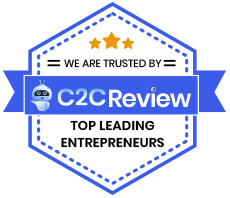Latest blogs
Award-Winning Mobile App Development Company in India (2025) - Custom Solutions for Every Business
In such a fast-paced digital world today, a strong mobile presence is a must-have for any business t...Top App Development Company for Custom Mobile and Web Apps in 2025
If you’re searching for the best app development company in 2025, you’ve landed in the r...How to Find the Best Game Development Company for Your Project in 2025
Finding the best game development company in 2025 for your project is crucial to ensuring its succes...How to Choose the Best Game Development Company for Your Business Needs
Choosing the right game development company is a critical decision that can shape the success of you...Mobile App Development 2025 Trends: Why Cuevasoft LLC is Your Best Choice
The mobile app landscape is set to undergo groundbreaking transformations in 2025, and understanding...The Ultimate Guide to Mobile App Development in Delhi: Choosing the Best Company for Your Project
When it comes to mobile app development in Delhi, finding the right company to bring your ideas to l...Best Mobile App Development Company: Your Trusted Partner in Mobile Solutions
Cuevasoft LLC is a trusted name and a leader in custom mobile app development. Their proven track re...Top Mobile App Development Companies in India: A Comprehensive Guide
Finding the right partner for your app development needs can be a game-changer in today’s comp...Top Game Development Companies in India: Best Studios for Cutting-Edge Gaming Solutions
India has rapidly emerged as a global hub for game development, boasting a blend of creativity, cost...Best Game Development Company in Jaipur for Custom & Readymade Solutions
Jaipur, with its rich culture and growing technological prowess, is steadily becoming a hotspot for ...Best Mobile App Development Company - Cuevasoft LLC | Powering Your Digital Growth
When it comes to finding the best mobile app development company, Cuevasoft LLC stands out as a trus...Best SEO Company in India: Elevate Your Online Presence with Cuevasoft LLC Expert Services
Welcome to the blog that marks a significant milestone for Cuevasoft! With a proven track record in ...Best Mobile App Development Company in 2025 | Innovative Solutions by Cuevasoft
Discover why Cuevasoft LLC stands out as the Best Mobile App Development Company in 2025 with this i...Best Mobile App Development Company in 2025: Top iOS, Android, and Cross-Platform App Developers
Looking to find the right mobile app development company in 2025? This guide is here to simplify the...Top Game and App Development Company in India | Custom & Readymade Solutions for Every Game
Cuevasoft is a leading name in the gaming and app development industry, offering unmatched expertise...Expert Game & App Development-Cuevasoft LLC Services
Cuevasoft LLC is a leading name in the game and app development industry, renowned for delivering in...Top Game Development Company in Jaipur - Cuevasoft LLC
Cuevasoft LLC stands out as a top game development company in Jaipur, known for its expertise in cra...Transform Your Business with Cuevasoft – A Leading Mobile App Development Company
Mobile apps have become essential for modern living and thriving businesses alike. At Cuevasoft, a l...Best Mobile App Development Companies in India: Expert Reviews
There is no doubt that mobile applications are now the new necessary tools for businesses that bring...Best Mobile Game App & Website Development Company In India
Mobile Game App & Website Development is one of the critical digital strategies for businesses a...Best Mobile App Development Company in Jaipur
Cuevasoft LLC is one of the best mobile app development companies in Jaipur. The company specializes... Whatsapp Ceuvasoft
Whatsapp Ceuvasoft












.jpeg)











.png)


.webp)